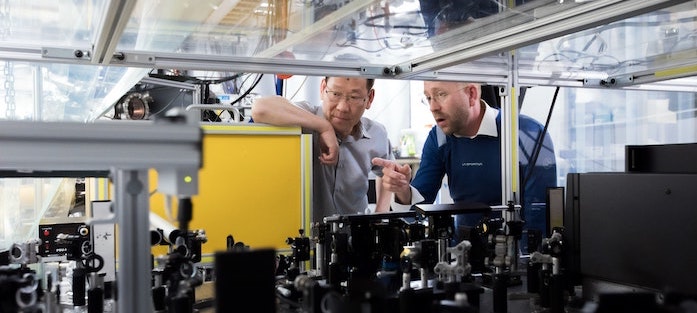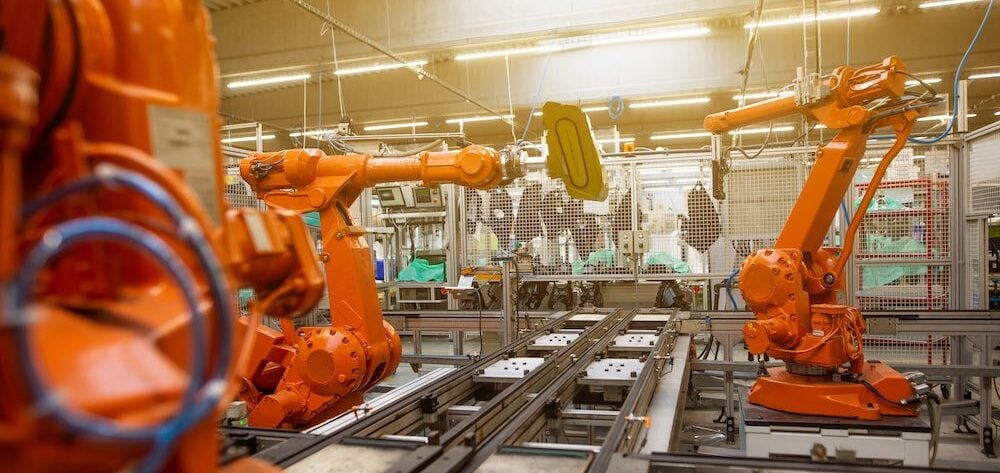Ever since World Economic Forum founder Klaus Schwab coined the term Industry 4.0 in 2015, enterprising individuals have been trying to promote the concept of Industry 5.0.
Industry 4.0 was the buzzword chosen to describe the expected transformation of industry by technologies such as cyber-physical systems, the internet of things, cloud computing, cognitive computing, and artificial intelligence. In my view we are still in the early stages of this revolution with the application of these technologies still emerging in many manufacturing sectors.
Given that the Fourth Industrial Revolution is still only getting started, my reaction to companies and individuals already promoting the Fifth Industrial Revolution is one of scepticism. However, the new Industry 5.0 initiative from the European Union does provide a fresh perspective and may in fact herald another revolution in the way we think about modern manufacturing.
Industry 5.0 Meaning – What Is It?

So, what is Industry 5.0 according to the EU?
It seems that the EU has recognised what we at TXM Lean Solutions have always believed, that the digital transformation will only succeed if it has people at the centre of the transformation.
Industry 5.0 (Industrial Revolution 5.0, or the 5th Industrial Revolution) is about creating sustainable, human centric and resilient industry.
Putting People at the Centre of Industry Transformation
So much of the rhetoric about Industry 4.0 focuses on replacing people with machines (with machine learning).
However ultimately this is self-defeating and as we frequently see with many over-ambitious automation projects, doomed to fail.
Of course, we want to leverage technology to improve competitiveness, reduce costs and offer better products and services to customers, but to be successful this needs to be achieved with the support and input of our employees, not at the expense of our employees.
The EU Industry 5.0 initiative looks for a balance by promoting a future industry which is:
- Human Centric – Promotes the talents, diversity, and empowerment of human workers.
- Sustainable – encourages consideration of environmental impacts.
- Resilient – Agile and resilient to external shocks with flexible and adaptable technologies.
Many are questioning the focus on “corporate social responsibility” adopted by many big companies, and it might be easy to dismiss Industry 5.0 as “politically correct Industry 4.0”. However, examining it more closely it is clear that industry 5.0 makes incredible business sense. Few can argue that a focus on developing employees makes sense in this competitive job market.
Equally, reducing waste and energy consumption at a time of rising input and energy costs is both good business sense and a hedge against future input cost shocks. Finally, the need to improve resilience in today’s volatile and uncertain times must be a lesson everyone has taken from the experience of the last three years.
Is Industry 5.0 Really Just Lean Industry 4.0?
We think so.
Right from the first introduction of Industry 4.0, we have argued for a balance between technology, people, and process.
Difference Between Industry 4.0 and 5.0
Only when these three aspects of change are addressed are you likely to get the results you expect.
Lean, with its focus on empowerment, respect for people, and the elimination of waste in all its forms is an ideal framework to deploy Industry 5.0.
The Industry 5.0 goals of empowering and developing employees, eliminating waste in the process and creating agile and resilient processes and enterprises are actually Lean goals as well.
How Do You Implement Industry 5.0 in Your Business?

The question with any big transformation like Industry 5.0 is where to start. Over recent years, businesses have been subjected to Industry 4.0 assessments, reviews and readiness surveys that have seen the adoption of new technology as an end in itself, rather than a means to an end.
Industry 5.0 Technology
As a result, too many investment decisions with Industry 4.0 seem to have been driven by “FOMO” (fear of missing out) on the latest technology, rather than actual business need.
With its focus on people, environment, and resilience as well as technology, Industry 5.0 demands a more holistic approach. This starts with understanding your whole value stream. This will help you identify waste throughout your process and prioritise the technological and other initiatives, that will deliver the greatest return for your business.
By engaging your employees in this process, you gain their input and ideas and make them part of the transition.
Industry 5.0 Production
At the workstation and production line level a focus on involving front line employees and eliminating waste first then automating will lead you to adopting simpler, lower cost and more flexible automation solutions.
For example, cobots (collaborative robots) integrated in to a production line rather than big, complex and unreliable robot cells or simple product transfer systems rather than massive conveyor systems or AGV networks.
Industry 5.0 FAQs
How Can Businesses Prepare For The Transition To Industry 5.0?
Businesses can prepare for the transition to Industry 5.0 by investing in technology that supports human-machine collaboration, providing training to employees for adapting to new technology, and developing strategies centered around personalization and sustainability.
What Is The Future Of Industry 5.0?
The future of Industry 5.0 is about creating a balanced collaboration between humans and machines.
It aims to harness the cognitive abilities of humans and the processing power of machines to create a more personalised and sustainable production process.
What Industries Are Most Affected By Industry 5.0?
The manufacturing sector is the most affected by Industry 5.0, with other sectors like logistics, healthcare, and service industries also undergoing significant changes due to the shift towards more human-centric processes and technology.
What Is A Cobot?
A Cobot, or collaborative robot, is a robot designed to work alongside humans in a shared workspace.
Unlike traditional robots, Cobots are equipped with sensors and AI to safely interact with humans in a wide range of tasks.
Will Industry 5.0 Create Jobs Or Cause Unemployment?
Industry 5.0 is expected to create new job opportunities while also transforming existing ones.
While automation may replace some tasks, the focus on human-machine collaboration means that new roles will emerge that require human skills and cognition.
Final Words On The Definition Of Industry 5.0
The EU Industry 5.0 initiative is more than just a buzzword. It addresses the key gaps in much of the thinking that has been driving Industry 4.0 and provides a human-centric and sustainable pathway for the technological transformation of industry.
Industry 5.0 is a natural fit with Lean thinking with its focus on respect for people, waste elimination and flexibility and agility.
In fact, at TXM Lean Solutions we regard Industry 5.0 as Lean Industry 4.0 and look forward to working with you to make your business an Industry 5.0 leader.
Contact us to find out how.





